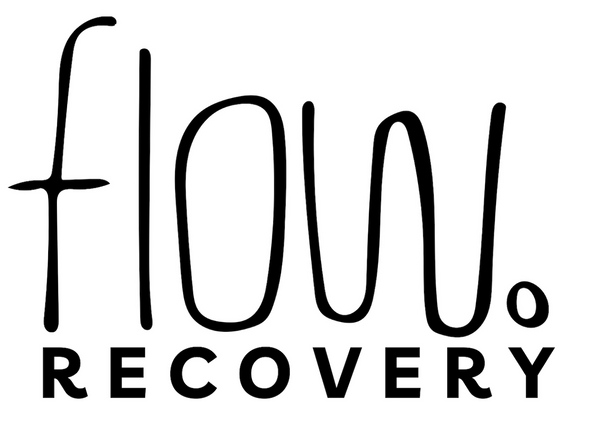Quick Summary
In a 30-day ice bath experiment I found daily short cold plunges (2–5 minutes) produced noticeably deeper, more restorative sleep, reduced everyday stress, and faster post-workout recovery. The practice also built mental resilience and discipline; ice bath weight loss after one month was subtle (small body-composition changes) compared with the bigger wins in energy and recovery. Cold immersion can spike norepinephrine and dopamine (research), and while generally safe for healthy people, consult a healthcare professional if you have medical or cardiovascular concerns.
Introduction
If you have ever scrolled through health and wellness trends online, you have probably seen people sitting in tubs filled with icy water, swearing by the benefits. At first glance, it seems extreme.
Why would anyone willingly sit in freezing water? I had the same question before starting my own 30-day ice bath experiment. What surprised me most was not just the physical side of the challenge, but how much it shaped my sleep, stress levels and overall recovery.
Did You know “A 2000 human study found that immersion in cold water (14 °C) boosted plasma norepinephrine by 530% and plasma dopamine by 250%”
Here’s what happened after a month of consistent ice baths and what you might expect if you are curious to try it for yourself.
Why I Started with Ice Baths
I did not approach this experiment just to test my tolerance for cold. My real interest was in recovery. After long workouts and demanding days, I was looking for a natural way to feel refreshed instead of constantly drained.
I also wanted to know whether the claims around ice bath weight loss before and after 1 month were really worth considering or if they were just another fitness trend.
It felt like the right time to step out of my comfort zone and put it to the test.

Week 1: The Shock of the Cold
- The first dip was brutal - barely a couple of minutes felt like forever.
-
Surprisingly, my muscles felt less sore afterward, and I had a burst of energy.
Sleep began to improve slightly; after the body braced against the cold, it seemed to “let go” into deeper rest.
Week 2: Settling into the Routine
By week two, the cold wasn’t as shocking. I learned to breathe through the discomfort and even started to look forward to it.
Key observations:
- Faster recovery after strength training - soreness faded quicker.
- Small but noticeable changes in body composition.
- The mental benefits kicked in: every plunge felt like a personal win, boosting confidence.
Week 3: The Turning Point
Week three is where things shifted:
- Sleep quality skyrocketed. I wasn’t just sleeping longer, but deeper.
- Stress became easier to handle - my resilience felt stronger.
- Ice baths became more than recovery - they became mental training.
Week 4: Looking Back After a Month
By the end of the month, the changes were undeniable:
- Sleep - deeper and more restorative
- Stress - more manageable, even during busy days
- Recovery - faster, less soreness after workouts
- Discipline - stronger mental toughness from consistency
|
Takeaway |
What I Noticed After 30 Days |
|
Sleep quality improves |
The calming effect after each bath carried over into my nights, leading to deeper, more restful sleep. |
|
Stress becomes easier to manage |
Facing the cold daily built resilience, making life’s stressors feel easier to handle. |
|
Recovery speeds up |
Muscle soreness decreased, and workouts felt more sustainable with faster bounce-back. |
|
Mental strength grows |
The consistency of ice baths built discipline, confidence, and a stronger mindset. |
|
Weight loss is a bonus |
Subtle changes in body composition appeared, but the biggest gains were in energy and recovery. |
The Key Takeaways
After a month of daily ice baths, here is what I learned:
Sleep quality improves: The calming effect after each bath carried over into my nights. Stress becomes easier to manage: Facing the cold built resilience that spilled into daily life.
Recovery speeds up: Muscle soreness decreased and workouts felt more sustainable. Mental strength grows: Consistency builds discipline and confidence.
Weight loss is a bonus, not the main benefit: Subtle changes in body composition showed up, but the real win was in energy and recovery.
So, Should You Try It?
If you are looking for a natural way to enhance recovery, support your mental health and improve your sleep, ice baths are worth considering. They are not just about physical endurance but about creating balance between body and mind.
For me, the 30-day journey was proof that sometimes the simplest practices can bring the biggest changes. The cold became more than just a recovery tool, it became a way of resetting and recharging.
Conclusion
A month of ice baths taught me that wellness is about more than numbers or quick fixes. It is about how you feel when you wake up, how you manage stress and how quickly you bounce back from challenges.
While the physical benefits are real, the mental and emotional ones are just as powerful.
If you are curious about starting your own recovery journey, Flow Recovery makes it easy to bring this practice into your routine with ice bath products designed to support you every step of the way. Sometimes all it takes is the courage to take the first plunge.
Frequently Asked Questions
1. Does taking ice baths really help with weight loss?
Ice baths are not a direct method for shedding fat, but they may support weight management by slightly increasing calorie burn through cold exposure. Combined with a balanced diet and regular exercise, they can complement a healthy lifestyle.
2. What kind of results can I expect from ice baths after one month?
After a month of consistent ice baths, many people report improved sleep quality, reduced muscle soreness, better stress management, and feeling more refreshed. Visible weight loss results vary depending on other lifestyle factors.
3. Can an ice bath reset the nervous system?
Yes, cold exposure can help activate the parasympathetic nervous system, which promotes relaxation and recovery. Many people find that ice baths reduce stress and improve their ability to manage anxiety.
4. What are the mental benefits of ice baths?
Mentally, ice baths can help build resilience, reduce stress, and enhance focus. The practice of facing the cold teaches discipline and can leave you feeling more calm and centered afterward.
5. Are ice baths dangerous?
Ice baths are generally safe when practiced correctly, but they are not for everyone. People with certain medical conditions, like cardiovascular problems, should consult a healthcare professional first. It is also important not to stay in the cold for too long.
6. What are the disadvantages of ice baths?
Some disadvantages include discomfort, and temporary numbness. For beginners, the initial shock can feel overwhelming, but with gradual exposure, most people adapt.
7. How long should I stay in an ice bath?
Most experts recommend starting with 2–5 minutes and gradually building up. Staying in longer is not always better and can be unsafe if overdone.
8. Do ice baths help with recovery after workouts?
Yes, ice baths are widely used for recovery because they reduce muscle soreness, calm inflammation, and support faster healing after intense training sessions.
9. Can ice baths improve sleep?
Many people experience deeper and more restful sleep after consistent ice baths. The drop in body temperature signals to the body that it’s time to rest, which may improve overall sleep quality.
10. How often should I take ice baths?
The frequency depends on personal goals. For general recovery, 2–3 sessions a week may be enough, while athletes or those using them for stress management may benefit from more frequent use.


